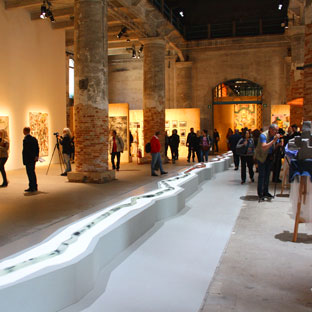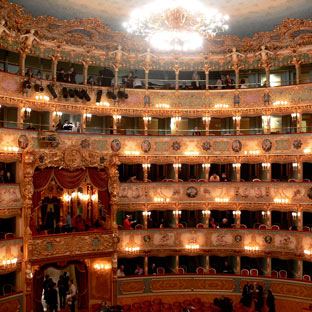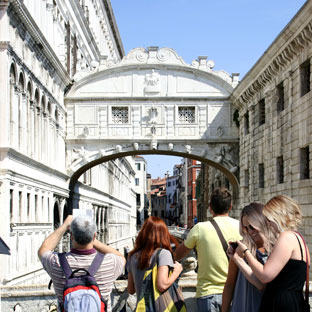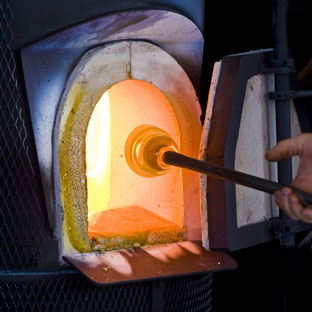[Photo on top by Marc De Tollenaere]
The world of masks and mask-making is wrapped in a mystic symbolism that has captivated and excited curiosity among people for centuries.
In the Venetian Carnival, the mask aimed to disguise someone’s identity. The spirit of the Carnival was indeed the possibility to mingle with the crowd in the streets and at the parties. Nobles could safely attend “disreputable” places, and the poor could experience the feeling of being like any one else. Thus, Carnival was the period of the year when social classes were “nullified” and everyone could have fun.

Once simple and all identical, so that none could be recognized, in the present times costumes and masks have become means for showing the skills of the artisan who crafted them—with creativity, taste for the research of materials, and inventiveness. Masks are now very valuable and often unique, custom-made artworks, and they are the protagonists of contests and parades.
ARTICLE CONTINUES AFTER ADVERTISEMENT
In this story, there is one thing that has never changed: the centuries-old Venetian tradition of mask making and the universally recognized skills of the mascareri of the lagoon city. Here, you can find the most beautiful, original, and precious masks. This is where the masks you see in the movies or on the stages are crafted. This is the place where you can discover how this mysterious and evocative object is created.
It is a magical world that counts many eminent leading figures. Among them, Kartaruga is one of the most renowned brands all over the world. Since 1985, Kartaruga’s artisans create masks according the traditional techniques of ancient Venetian mask makers, also when they are inventing completely new models.

«Everything starts with the Carnival—explains Francesca Cecamore, one of the owners of Kartaruga brand—that, for a mask maker, means working with the people and for the people. The collaboration with cinema and theatre comes second, as a consequence of this know-how. I like to think that masks are the keys to enter a magical world, to be lived with passion: the world of Carnival is made of escape, transgression, in a positive sense—underlines Francesca—and play.»
«Today the Carnival is less heart-felt by Venetians than some decades ago (in the 1970s, 1980s and 1990s), when creating a carnival costume could be a year-long activity. It was a way to stimulate fantasy, research, and talent when inventing crafting solutions, cooperating with relatives and friends, to finally exhibit the product of the “effort” with pride and amusement. All this was also the chance to learn patience, commitment, and the time and dedication that the creation of a costume and a mask require.»

In the shop, a few steps from St. Mark’s Square, traditional masks, stylized or distorted faces, true or imaginary animals, fairy-tale characters, steampunk, all await to be worn to become alive and give a new identity.
The protagonist of Kartaruga’s creations is papier-mâché. Thanks to its flexibility and softness, it perfectly adapts to anyone’s face. Kartaruga’s collections are based on a deep knowledge of the history of costume, and on the experimentation on new decoration techniques and processes: each mask holds an ancestral meaning, which cannot be ignored even when inventing or developing new models.
The quality of Kartaruga’s work is appreciated not only in Venice. In fact, they create masks for movies, shows, music videos, and events worldwide. Eyes wide shut, Parnassus, Gambit, Casanova are only a few of the productions which used Kartaruga’s masks, and the list of the famous faces hidden by one of their mask is wide and evocative indeed.

Discovering with your own eyes and hands how to craft a mask is equally fascinating. Entering a mascarer atelier and participating to a practical class is an important educational experience, since it teaches the care, the attention to detail, the time, the expertise and the dexterity which are necessary to this kind of work. Not to mention the psychological considerations dedicated to the character to be represented. The mask must have a strong communicative power in order to allow those who wear it to become someone else.
This is the core of the experience of visiting a mask maker laboratory. During the classes at “Il Canovaccio,” the shop of Kartaruga, participants create their own mask under the guidance of an expert artisan: “getting your hands dirty” you will appreciate how beautiful, complex, and precious masks are. The result is a unique object that will always remind you of your visit to Venice and this experience.
Kartaruga’s Atelier, “Il Canovaccio”, is open daily from 10 am to 6 pm.
Atelier Kartaruga, negozio Il Canovaccio
Castello 5369-70, Calle delle Bande – 30122 Venezia
Tel. +39 041 2410071
info@kartaruga.it
www.kartaruga.it
Facebook: @Kartaruga
Instagram: @Kartaruga










